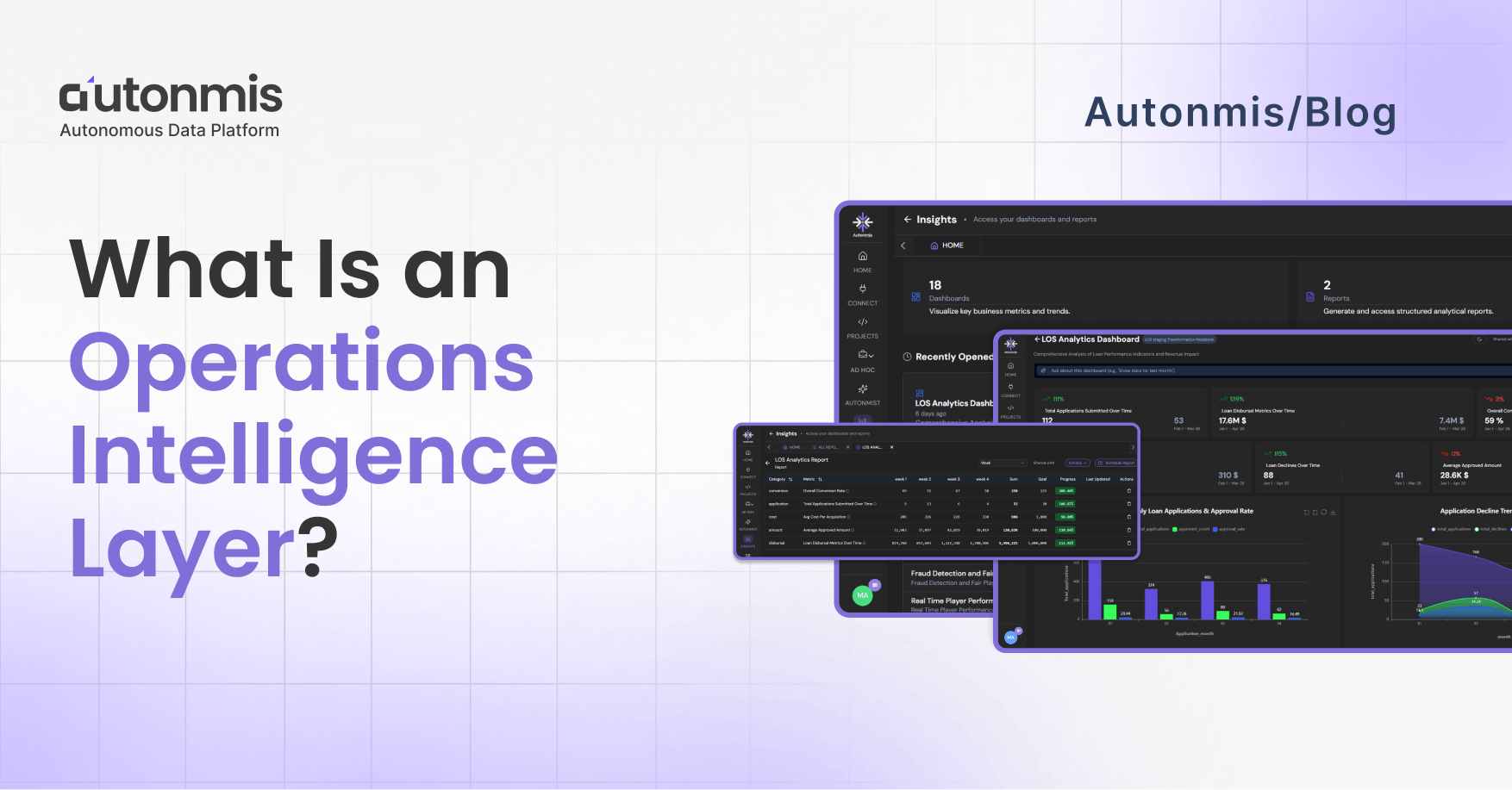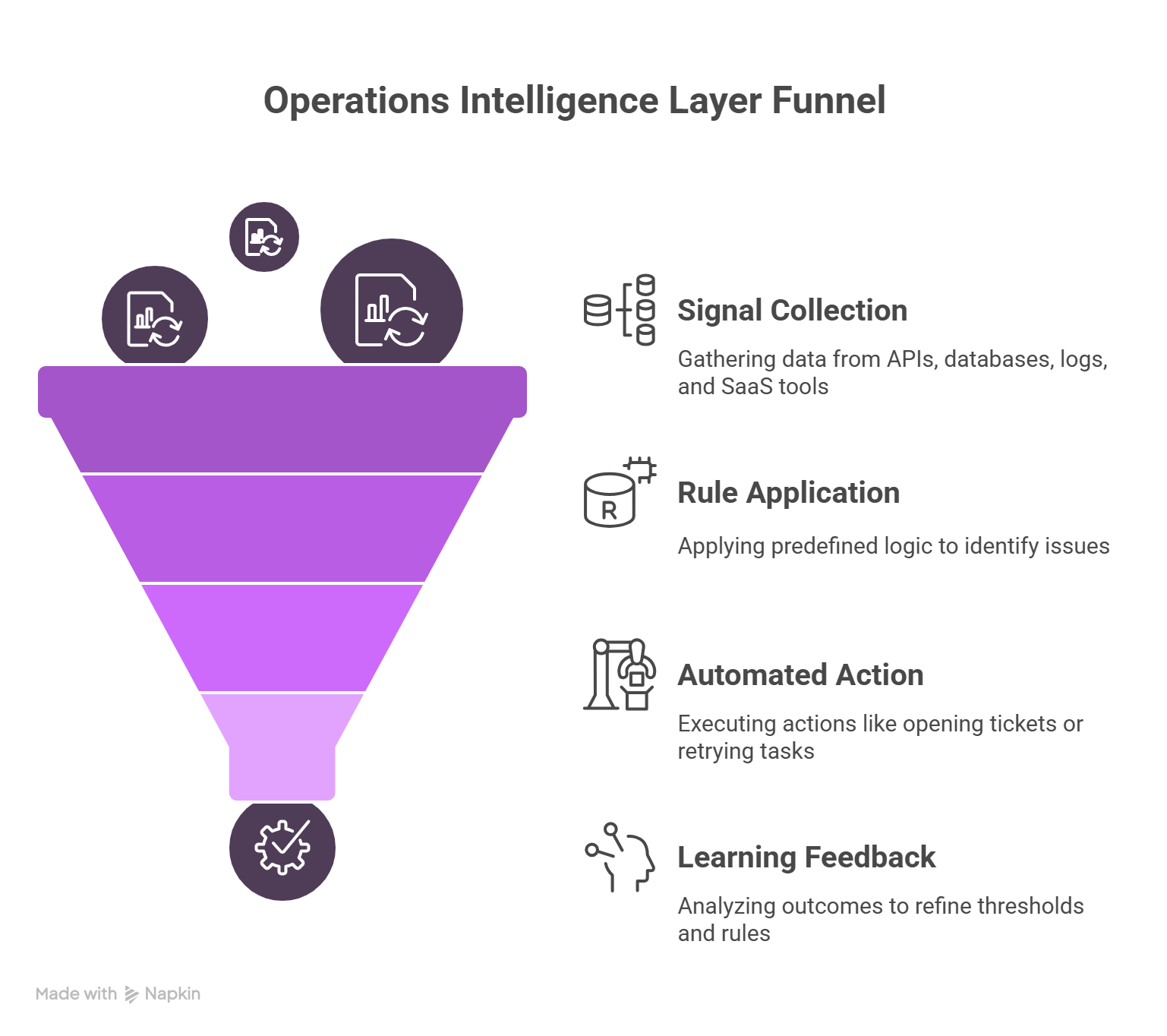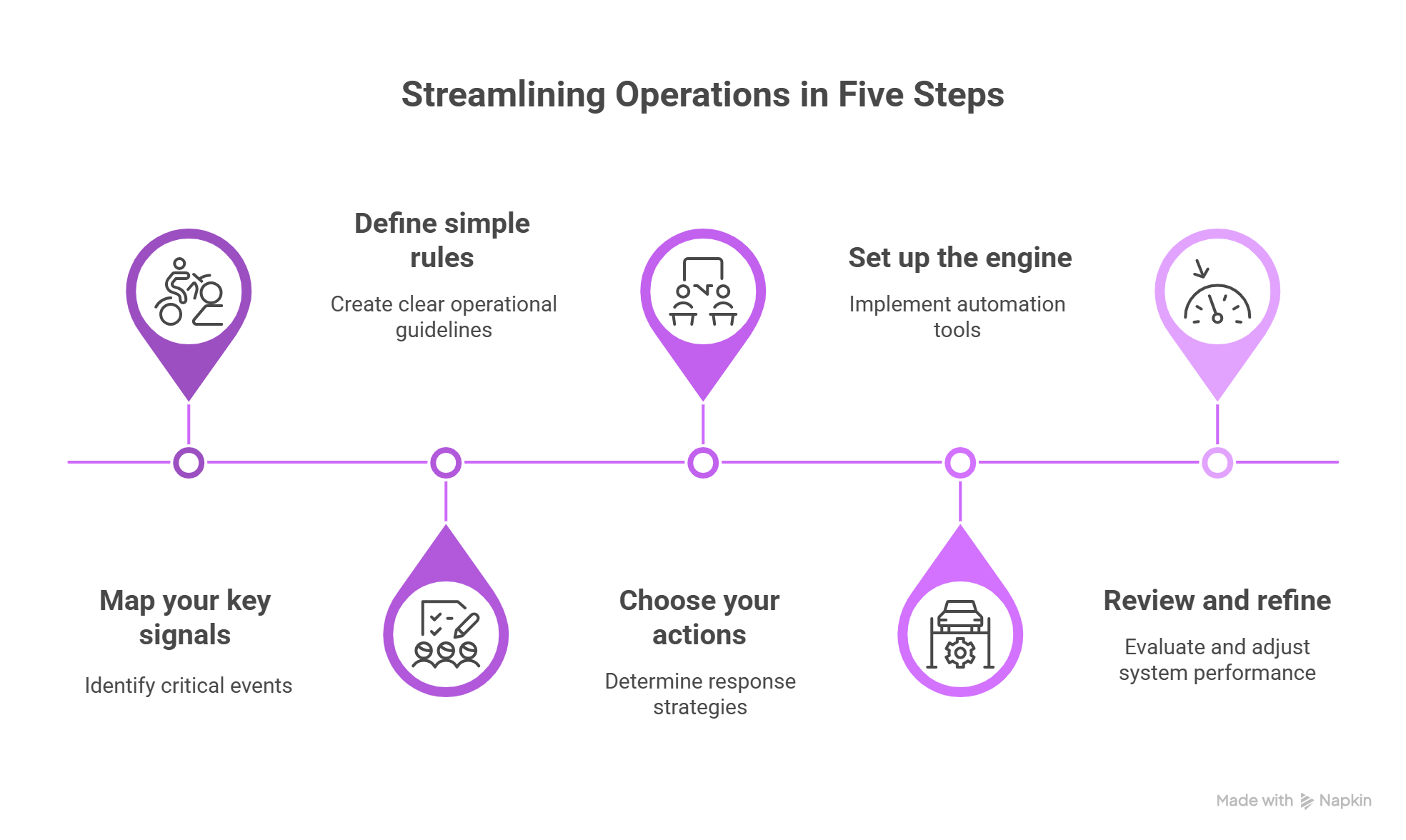7/16/2025

AB
What Is an Operations Intelligence Layer? A Better Alternative to Dashboards
Discover why traditional dashboards fall short in real-time ops. Learn what is an Operations Intelligence Layer and how it transforms data into actionable insights.

You’ve relied on dashboards for years. They give you charts, graphs, and color‑coded alerts. Yet somehow, your team still scrambles when something breaks. That’s because dashboards are built to show you what happened - not to help you act in the moment.
An Operations Intelligence Layer sits above your data pipelines and tools. It watches every event in real time, applies your business rules, and nudges people or systems to respond without waiting for someone to refresh a chart. It’s the modern foundation of Business Operations Intelligence, where insight leads to action, not just observation.
1. Why Dashboards Often Fall Short
- Time lag: By the time data makes it onto a dashboard, the problem may already be out of hand.
- Too much noise: You see every metric, but it’s hard to know which ones really need attention right now.
- Manual work: Someone still has to open tickets, ping a Slack channel, or write an email to get things moving.
- Siloed views: Each team - finance, support, product uses its own dashboard, so no one has the full picture
“We spent more time debating what the data meant than fixing the problem.”
- Ops Lead at a midsize SaaS company
2. How an Ops Intelligence Layer Changes the Game
Instead of waiting for a person to notice an issue, this layer:
- Listens to every signal.
It taps into APIs, databases, logs, and SaaS tools, collecting events as they happen. - Applies clear rules.
You define logic say, “flag any payment that fails twice in a minute” or “alert if server CPU stays above 85% for five minutes.” - Takes action automatically.
When a rule fires, it can open a Jira ticket, post to Slack, retry a failed task, or even call a remediation script. - Learns over time.
Each action’s outcome - true issue or false alarm - feeds back into the system, so thresholds adjust as your operations mature.
It’s a natural evolution from static dashboards to Operations Intelligence Layer that works in real time, not just reports the past.

Checkout: What Is AI Data Analytics? Why it Matters
3. A Simple Example: Handling Stuck Payments
- Old approach (dashboard):
Every morning, someone checks the payment-failures chart. They spot a rise, raise a ticket, wait for engineering to investigate and by then some customers have churned. - With an Ops Intelligence:
Three failed payment attempts within two minutes automatically trigger a retry and alert the payments team. The account manager sees a Slack message, reaches out to the customer if needed, and revenue keeps flowing.
This is Operational Intelligence in action not just knowing, but fixing before it’s too late.
4. Bringing Teams Together
Because the Operations Intelligence Layer works across your whole stack, everyone shares the same view:
- Product knows when feature flags cause rollouts to slow.
- Support hears about customer-impacting errors first.
- Finance sees billing hiccups in real time.
- Engineering gets clear, consistent incident reports - no guesswork needed.
This shared visibility strengthens Business Operations Intelligence across teams and silos.
5. Getting Started in Five Steps
- Map your key signals.
Write down every event that matters - failed jobs, slow database queries, error logs, customer complaints. - Define simple rules.
Think in plain language: “If X happens more than Y times in Z minutes, do A.” - Choose your actions.
Decide who or what needs to move when an issue arises - a person, a team channel, or an automated script. - Set up the engine.
Use a no-code or low-code tool to connect data sources, rules, and actions in a few hours or days. - Review and refine.
After a week, check which alerts were helpful and which weren’t. Tweak your rules and thresholds.

Checkout: What is Generative BI and Why It Matters in 2025?
6. Why It Matters Now
Modern work is fast and complex. Systems talk to each other constantly. Waiting for someone to notice a dashboard alert is like missing the stoplight, it slows everything down.
An Operations Intelligence Layer doesn’t just show you problems. It helps you solve them quietly and confidently before they affect your customers or business outcomes.
In Brief
- Dashboards tell you what happened.
- Ops Intelligence helps you act while it’s happening.
When ops, engineering, support, and finance all work from the same real‑time view—and when much of the routine follow‑up happens automatically - you’re building real Business Operations Intelligence into how your teams work.
That’s how you move from reacting to preventing. And in today’s world, that makes all the difference.
How Autonmis Helps
At Autonmis, we’ve built our platform to do exactly what an Operations Intelligence Platform should - listen to your operational signals, apply logic you control, and take action where it matters.
No heavy setup. No code needed. No waiting for engineering.
Whether you're monitoring disbursal delays in lending ops, catching errors in your billing system, or keeping an eye on delivery SLAs, Autonmis helps you detect, decide, and act faster.
If dashboards have reached their limit, we're here to help you go beyond them.
Recommended Learning Articles

10/23/2025
Top 6 Ways AI Is Transforming Business Operations

9/22/2025

AB
The Hidden Cost of Manual Operations in BFSI
Actionable Operational Excellence
Autonmis helps modern teams own their entire operations and data workflow — fast, simple, and cost-effective.